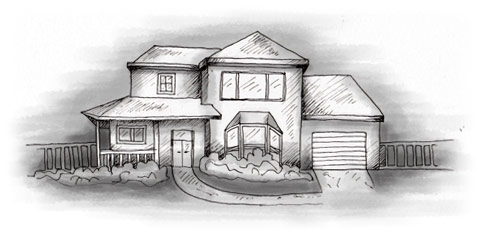When reading this article bear in mind that each state of Australia forms its own legislation in this area and therefore the information here-in is general only and may not be exactly applicable in your situation.
Mainly, sales of property within Australia are conducted through real estate agents by the ‘offer and acceptance’ method. Another method of buying property is by auction, and the popularity of this method fluctuates both by the percentage of properties offered, and also the number states in which it is the dominant method of sale.
In certain districts of some states it is impossible to purchase property except by bidding at auction.
There has been some reported "misbehaviour" with regard to auctions and the way at which they are conducted. Governments have stepped in a few times to set standards of conduct and in due course the popularity of auctions may dwindle.
To start with, the "expected selling price" which was published very low in order to entice prospective buyers to the sale was compelled to be more realistic. Friends of the seller or the auctioneer are now usually prohibited from making false offers to excite the crowd and push up the offered figure. In some states those people wishing to bid are required to register their interest before the commencement of the auction. The vendor can set an undisclosed, reserve price and until bids reach or pass that figure any offers need not be accepted.
Whilst some states provide for cooling off periods in property transactions these usually do not apply for sales by auction. The sale is made "at the fall of the hammer" i.e. once nobody offers a higher price, and the auctioneer declares that the property is sold at the price last offered. If the front door immediately falls off its hinges - tough! This means that whenever you attend an auction with intention to make a bid you need to do all your research before hand.
Building inspections, pest inspections, surveys, outstanding land tax, outstanding rates etc. all need to have been investigated and these can be very expensive. If you miss out on a couple of homes against which you were bidding the whole process starts to get quite expensive. On the subject of pest inspections these can be very serious. White ants, termites etc. can be a huge and costly problem because they can devour complete rafters or joists which are out of sight. They can devour the door frame leaving only the outside coat of paint.
It may be that the vendor is prepared to offer written guarantees. If so, read them carefully and retain a copy in case you need it.
At the "fall of the hammer" the deposit is required which is usually 10% of the sale price. The contract is usually the standard Real Estate Institute issue and the settlement time four to six weeks hence. All your finances need to be in order.
If buying a very run down property just to obtain the land there are fewer pitfalls. Buying with the intention of renovation can be difficult and should be left to the experts because renovating in Australia can be three or more times as expensive as it is in England, for example.
The main differences between the offer and acceptance method and the auction method are that with offer and acceptance you can do your homework after your offer has been accepted but before the contract becomes unconditional. With auctions you do your research prior to bidding on the property.
All the above information can be checked for the particular state in which you are interested by searching online for "REI (or Real Estate Institute)" followed by name of the state and "conditions of auction". Doing this will keep you right up to date.
Article written by: Fred Sparrow - Legal Kit Specialists Conveyancing Kits

